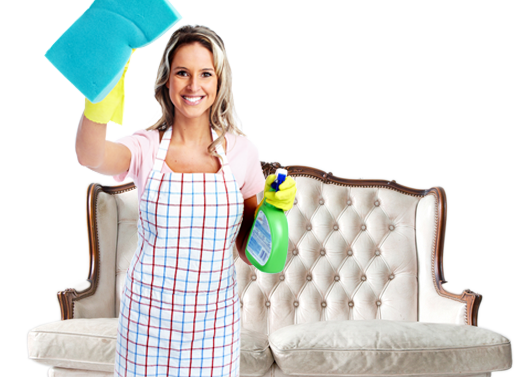Achieve a Fresher Home Environment by Removing Damp Odors
Posted on 28/09/2025
Achieve a Fresher Home Environment by Removing Damp Odors
Are you tired of that persistent damp smell in your home? You're not alone. Musty and damp odors can quickly take away from the comfort and cleanliness of your living space. Fortunately, with the right strategies, you can eliminate moisture-related odors and enjoy a truly fresh home atmosphere. In this comprehensive guide, we'll discuss what causes damp odors, how they impact your health and well-being, and offer practical solutions to help you remove and prevent unwanted smells once and for all.
Understanding the Causes of Damp Odors in Your Home
A musty smell in your house is usually not just about your nose. It's often a sign of underlying moisture problems. Recognizing the causes is the first step to an odor-free home.
Common Sources of Dampness and Musty Odors
- Leaking Pipes: Hidden leaks behind walls or under floorboards often go undetected, turning into hotspots for mold.
- Basements and Crawl Spaces: These areas tend to have poor ventilation and naturally higher humidity, making them susceptible to excess moisture buildup.
- Poor Ventilation: Air exchange is crucial to a fresh indoor climate. Without it, moisture lingers and leads to a stale smell.
- Wet Clothes Indoors: Drying laundry inside, especially during colder months, adds excess humidity to the air.
- Water Intrusion: Flooding, roof leaks, or poorly sealed windows can introduce constant dampness to indoor areas.
- Bathroom or Kitchen Steam: Hot showers and steamy cooking can both raise the humidity and eventually cause odor if not managed.
These common factors can create an ideal environment for the development of mold, mildew, and stale air -- the main culprits behind damp odors in your home.

Why Removing Damp Odors is Essential for a Healthy Home
At the core, removing damp smells from the house isn't just about comfort -- it's about health and well-being. Mold and mildew, which flourish in moist environments, can damage building structures and cause allergic reactions, respiratory issues, and other health problems, especially for children, the elderly, and those with immune disorders.
- Respiratory health: Mold spores and volatile organic compounds (VOCs) worsen breathing conditions like asthma and allergies.
- Home integrity: Prolonged dampness can rot wood, warp materials, and degrade insulation.
- Unpleasant environment: Persistent odors create discomfort for household members and visitors alike.
By eliminating damp odors, you not only improve your indoor air quality but also protect your home's structure and value.
Recognizing and Locating Damp Smells at Home
To remove musty odors efficiently, it's crucial to investigate their source. Here's how to narrow it down:
1. Conduct a Thorough Home Smell Inspection
- Check corners, closets, and behind furniture for musty scents.
- Smell fabrics, such as curtains, carpets, and upholstery, which can trap moisture-based odors.
- Examine basement floors, crawl spaces, and spots near household appliances for dampness or water stains.
*Tip: Walk through your house after being outside for a while--your nose will be more sensitive to lingering odors!
2. Look for Signs of Moisture or Water Damage
- Discoloration on walls and ceilings
- Bubbling paint or peeling wallpaper
- Visible mold spots, which may appear black, green, or white
- Warped floors or baseboards
- Condensation on windows and walls
Spotting these indicators can help you catch problems early and effectively remove damp smells from your home.
Proven Strategies to Eliminate Damp Odors at Home
Once you've identified sources, it's time to take action. Here are actionable strategies to help you banish damp house odors for good:
1. Control Humidity Levels Indoors
- Use Dehumidifiers: These devices extract excess moisture from the air, significantly reducing the development of mold and stale smells.
- Open Windows Regularly: Allow fresh air to circulate. Cross-ventilation is best--open windows on opposite sides of a room whenever possible.
- Keep Room Temperatures Steady: Avoid large temperature fluctuations, which can encourage condensation and lingering moisture.
2. Fix Leaks and Waterproof
- Repair Pipes: Inspect and address any leaking pipes under sinks or behind appliances.
- Seal Windows/Doors: Use caulking and weatherstripping to eliminate water intrusion.
- Inspect Roofs and Basements: Ensure proper drainage and fix cracks in foundation or roofing materials.
3. Clean Thoroughly and Regularly
- Deep Clean Fabrics: Wash curtains, pillow covers, throws, and any textiles exposed to damp air. Carpets may need steam-cleaning.
- Disinfect Surfaces: Wipe down walls, tiles, and baseboards with anti-mold cleaners or a mix of vinegar and water.
- Declutter: Remove boxes and clutter from basement and storage spaces, since these can absorb moisture and foster mildew growth.
4. Absorb Odors Naturally
- Baking Soda: Sprinkle baking soda on carpets and upholstery and leave overnight before vacuuming to neutralize damp odors.
- Activated Charcoal: Place bowls of charcoal in the epicenter of the smell to absorb moisture and musty scents.
- White Vinegar: Set out bowls of vinegar in affected rooms to trap lingering smells.
- Coffee Grounds: Use dry coffee grounds in bowls to naturally deodorize enclosed spaces.
5. Address Mold and Mildew Directly
- Household Cleaners: Use commercial anti-mold sprays or create a solution of 1-part bleach to 10-parts water for stubborn patches (test a small area first).
- Natural Remedies: Tea tree oil diluted in water can be an effective, less toxic alternative. Essential oils like lavender or eucalyptus can also discourage mildew.
- Dispose of Severely Affected Items: Sometimes, furniture or textiles may be too far gone and need replacing to fully remove damp house odors.
Long-Term Approaches to Prevent Damp and Musty Odors
Eradicating damp smells isn't a one-time fix; it's a continuous effort to maintain a fresher home environment. Consider these preventative methods:
Improve Household Ventilation
- Use Exhaust Fans: Always turn on bathroom and kitchen fans when showering or cooking.
- Keep Interior Doors Open: Promote airflow--even in closets or storage--by leaving doors ajar a few hours each week.
- Install Air Bricks or Vents: In older houses, these simple additions enable constant background air exchange.
Maintain a Regular Cleaning Schedule
- Check Water-Prone Areas Often: Inspect under sinks, behind toilets, and in basements for early warning signs of leaks or mildew.
- Launder Items Frequently: Especially bath mats, towels, and doormats, which are more likely to become damp.
Monitor Humidity With Smart Devices
- Hydrometers: Track indoor humidity and act when levels rise above 50-60%.
- Smart Sensors: Modern home automation systems can alert you to leaks or moist conditions instantly.

Frequently Asked Questions About Removing Damp House Odors
What is the best way to eliminate musty odors fast?
Fast results involve first airing out the property, using a dehumidifier, and applying odor-neutralizing substances like baking soda or activated charcoal. Meanwhile, disinfect the affected areas to prevent odor recurrence.
Are air fresheners effective against damp odors?
Air fresheners only mask the smell. To truly freshen your home environment, you need to address the root causes--moisture and mold.
How can I prevent mildew from returning?
Focus on lowering indoor humidity, improving ventilation, and quickly addressing any new leaks. Regular cleaning and prompt drying of wet surfaces make a big difference.
When should I call a professional?
If you find extensive mold patches, experience ongoing leaks, or notice a persistent odor despite your best efforts, call a specialist. Professional remediation may be necessary to fully safeguard your home.
Conclusion: Enjoy a Lasting Freshness at Home
A fresher home environment starts with understanding and eliminating the causes of damp odors. By taking proactive measures--such as controlling humidity, fixing leaks, cleaning thoroughly, using natural deodorizers, and swiftly treating any mold--you not only restore your home's welcoming feel but also ensure its longevity and protect the health of everyone inside.
Make these steps part of your regular house care routine and take satisfaction in walking into a healthier, truly fresh-smelling home every day.
- Identify and address moisture sources
- Maintain proper ventilation and humidity levels
- Clean and deodorize with effective, eco-friendly solutions
- Take action quickly at the first sign of damp or musty smells
With careful attention and consistent effort, removing damp odors from your home becomes a simple yet rewarding process--one that pays off in comfort, health, and peace of mind.



